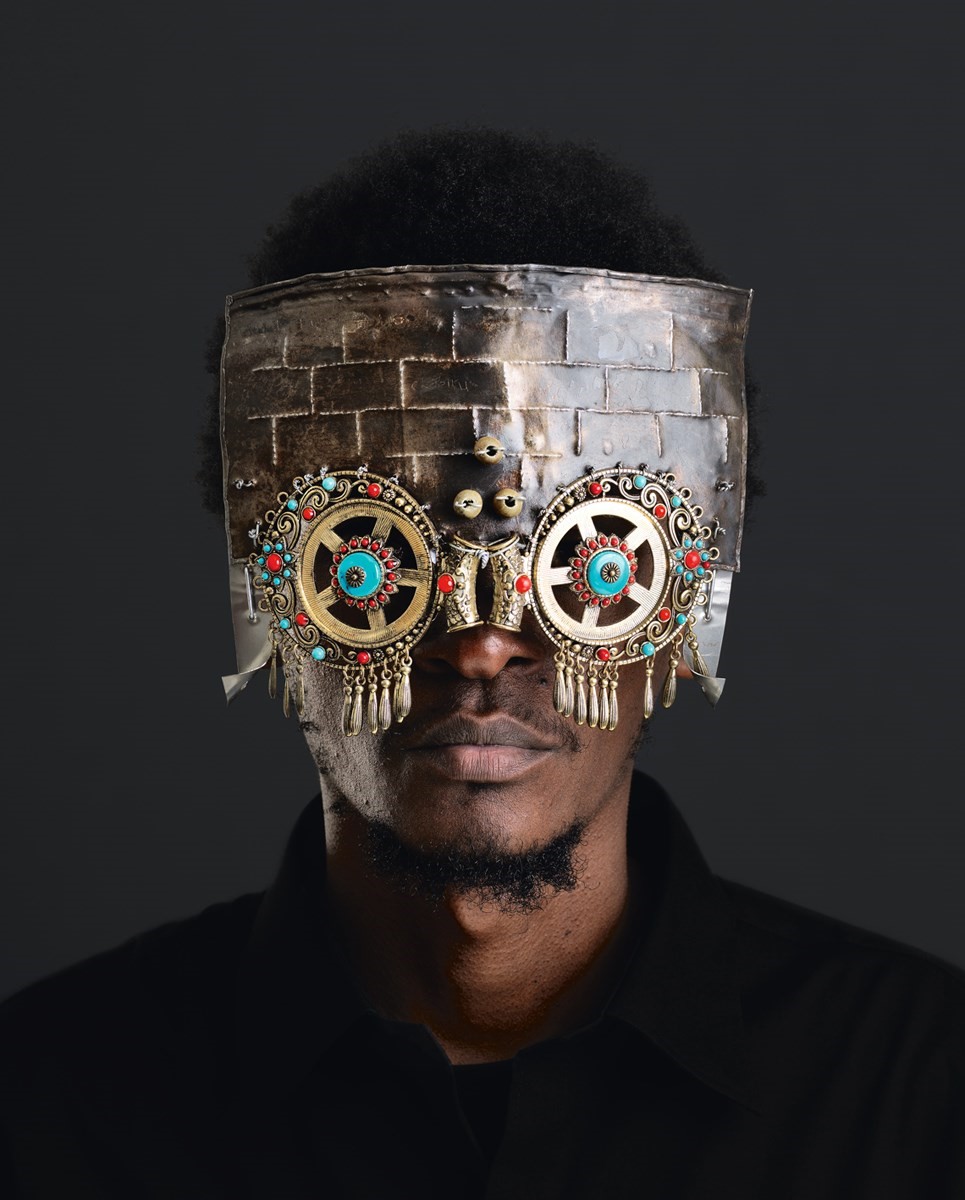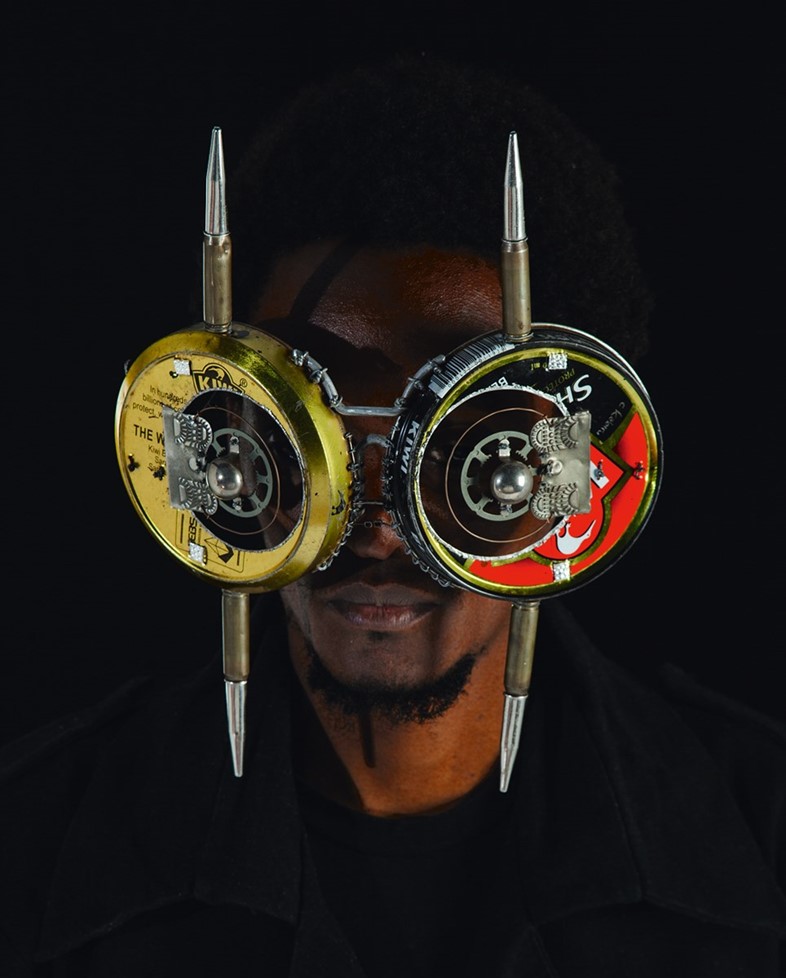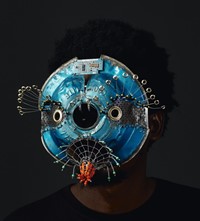Meet Cyrus Kabiru, the Kenyan Artist Turning Trash into Eyewear Gold...
- PhotographyCyrus Kabiru
- TextLaura Allsop
Laura Allsop meets the artist collecting trash from the streets of his native Nairobi and alchemising it into wildly inventive sculptures
“I feel like one of nature’s soldiers,” says Kenyan artist Cyrus Kabiru in a voice decidedly more mild than combative. Yet soldier of nature is a perfectly apt description for the 35-year-old, whose practice involves collecting trash from the streets of his native Nairobi and alchemising it into wildly inventive sculptures, from out-there eyeglasses embellished with bottle tops, beads and bits of wire, to souped-up bicycles that recall the poetry of Alexander Calder’s mobiles. Part Afrofuturist, part diesel-punk, Kabiru’s aesthetic is underpinned by the flotsam and jetsam of everyday life. “When I walk, I just collect. But nowadays, people know what I want,” he says of his recruits, who will often bring him bits and pieces. Materials are sourced on a local and occasionally global scale. When in London, “I get shining metals, even some wire and copper – very colourful trash,” he says. “If it’s plastic we get a very bright plastic. You have unique trash. Very clean.” Airport staff are frequently intrigued by the contents of his luggage. Happily, he says, “I connect with everyone very easily. If you’re a pastor, I’ll connect with you very easily; if you’re gangster, I’ll connect with you very easily.”
This quality came in useful when Kabiru was a child, making the very first iteration of his longest-running series of artworks, dazzling pairs of ‘glasses’ known as C-stunners (the C is for Cyrus). His father, refusing to buy him a pair of glasses, told him to make his own, which he set out to do using scrap from around the house, and later the gangster-run dump opposite the family home. His first pair, he recalls, featured beads, wire and bits of plastic; pretty soon he was operating a mini-economy, exchanging trash sculptures with classmates for homework. It earned him the nickname ‘Msanii’, or ‘artist’ in Swahili, though Kabiru had never met one and it was a while before he realised that artists were allowed to do more than just paint landscapes. Now, his C-Stunners are exhibited all over the world, drawing the interest of creatives and tastemakers from designer and curator Duro Olowu to Yasiin Bey, who visited the artist’s studio in Nairobi. Ever more outlandish and mask-like, they defy any normal conception of eyewear. A 2017 piece is composed of a flattened coral-blue paraffin lamp base, decorated with long metal eyelashes and a piece of circuit board for the forehead, while another almost entirely obscures the face with a sun-like construction featuring a wire mesh centre radiating white spokes. The former may recall a deep-sea creature out of Jules Verne but is named for Nairobi’s so-called Slay Queens – young women pursuing wealthy men and flaunting their surface riches on social media – while the latter is based on the architecture of Roman cathedrals. Modelled to fit Kabiru’s face, his practice now involves being photographed wearing the C-Stunners against stark backgrounds. “You see the glasses, you see my face,” he says.
At his most creative during his peregrinations around Nairobi, Kabiru also draws energy from the rural area near Mount Kenya where his grandmother lives, a haven populated with paradisal birds and animals. “I try to combine the congestion of Nairobi and the beauty of my rural area,” he says. His current project is a marriage of the two worlds, taking disused radios – once the glue of village life – and giving them the Kabiru ‘touch’. He wants, he says, to make these increasingly obsolete pieces of technology “more fantastic”. Though they might suggest the relics of a far-off planet, Kabiru’s works are entirely earthbound in their texture and composition. A hundred years from now, they will speak silently and powerfully of our throwaway culture – archives, as he puts it, of “junk histories”.


This article appears in the S/S19 issue of Another Man.
















